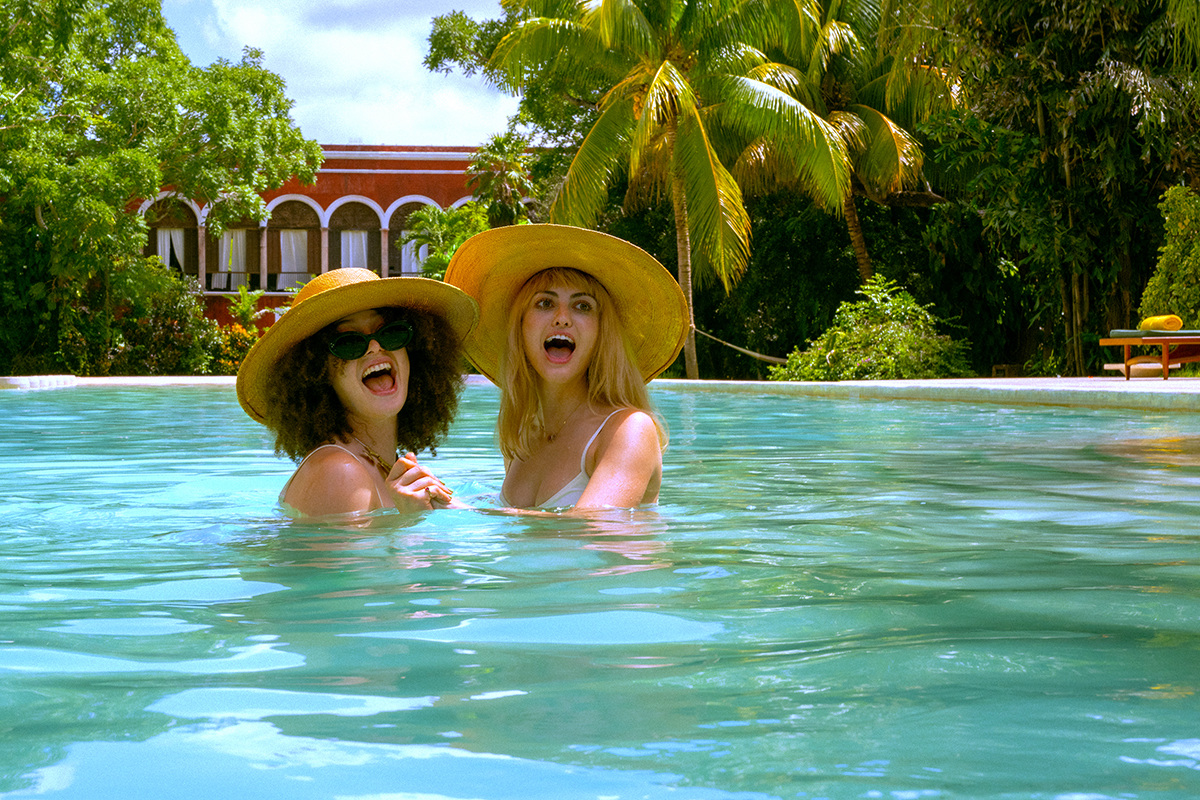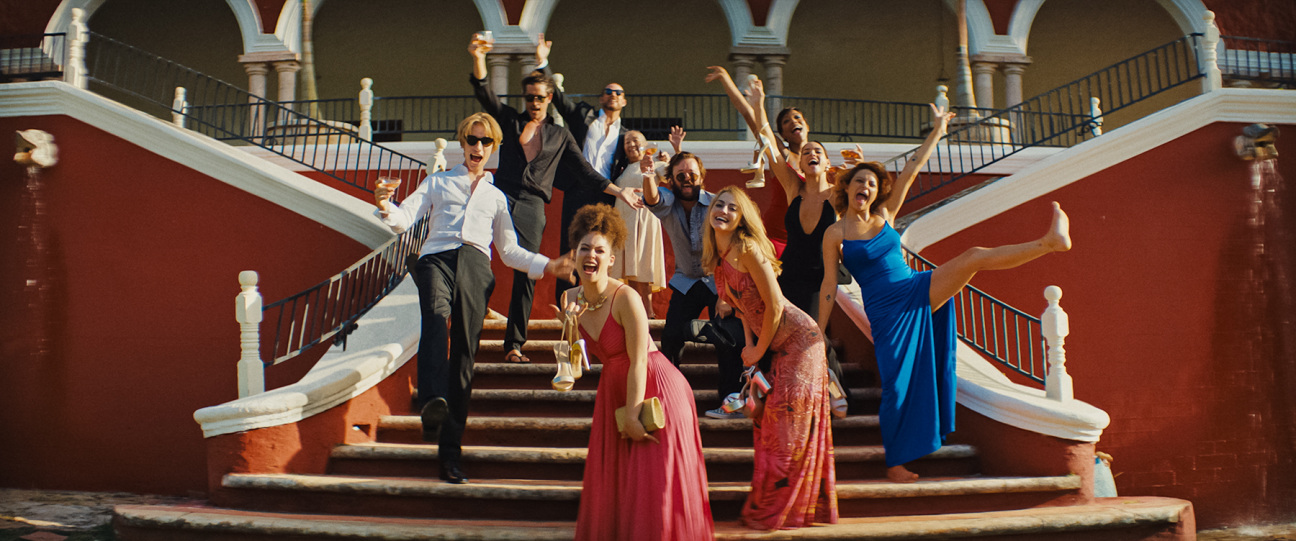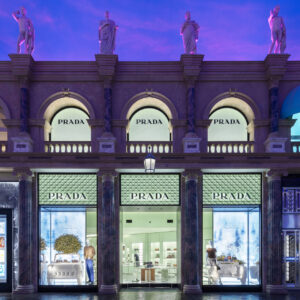
In Zoë Kravitz’s directorial debut, a group of young women (including Naomi Ackie and Alia Shawkat) are swept off to the private island of charismatic playboy and legendary party host, Slater King (Channing Tatum). Upon arrival, the women are given clothes—white swimsuits, wide-brimmed sun hats, and gowns—curated off-screen by costume designer Kiersten Hargroder (You, Supergirl, and Borat Subsequent Moviefilm). Here, she discusses the sweat-soaked fever dream in Mexico—part The Row, part rope play—that led to the blockbuster film.
CULTURED: What did those early conversations with Zoë look like? Did she give you a sense of like, “Slater King is the man and here's how he looks when he walks in”?
Kiersten Hargroder: Being that Zoë worked on this for a long time [starting in 2017, under the title Pussy Island], she had a pretty clear vision. Our job was to narrow in on what exactly does that look like? And how does it work with the actors we have? It's well known how meticulously stylish Zoë is, so it's no surprise that the film has a certain style. There's a very clean approach to what's in the film. It's also about what's not there. There's not a lot of jewelry. There's not a lot of adornment. It’s visually pretty clean and sharp. I think a lot of her inspiration came from vintage photos and clippings and fashion ads, wanting a little bit of that timeless appeal.

CULTURED: Adria Arjona's character starts out wearing those chunky silver earrings that everyone has a pair of right now. On the other end of the spectrum, the white bathing suit and sun hat worn on the island is a timeless look, as you said. How did you approach the task of placing the film in a certain time period? They're isolated on this island, cut off from the outside. It's a claustrophobic little world they're in.
Hargroder: The clothing is all provided for them when they get there, and that's a purposeful element to film. There was a lot of research into which shapes of swimsuits are going to suit a whole wide array of body types, making sure it's flattering but also pretty simple. We would bring in fit models and try on a bunch of different shapes to see what really evoked that timelessness, even in the simplicity of the straps.
These costumes being provided for them is seemingly luxurious. If you were to go on a vacation and everything was just provided for you, you wouldn't have to think about it and that feels good. But at the same time, in the film … you are interchangeable. Any woman can come there and fit this role for these men.
Zoë's talked publicly about what inspired her to write this—how she's been treated and how other women are treated in the industry and in the world. It's a back note in the film … but if you step back and see [how] the men are bringing these women, it's about control. It's also underestimating women—we can overcome these difficult situations and outsmart the men. You don't want to be hit over the head with that. It's under this veil of the resort and a fun party.

CULTURED: At the start of the film, there are two characters in bright red and blue dresses with faux diamond straps. There’s an aspect of aspiration to wealth for these young women. How do you represent that stylistically?
Hargroder: From the perspective of the two leads, Jess and Frida, they're working at a lot of these events. They're absorbing a lot of what these women wear and thinking it is sort of easy to fit in. It's just the right clothes, having the right thing. The red dress was something we purchased and then we copied the blue and made it to match. So, we had that red pill, blue pill sort of situation. It's a cheap dress, but it fits and it works, right? Any of us can mold into another type of person. As soon as you get to this island, you're molded into this object for men's affection, but there's a really interesting element of seeing that luxury is just a veil.
CULTURED: Channing Tatum's character is the person who most fits into this world. There's a lot in how a man wears a suit and how it fits that gives something away about his status. How did you create that element of the wardrobe?
Hargroder: There's a gala event at the beginning and the end of the film, and there's a sharpness to that contrast—the sort of laziness to the costuming on the island. That has come, in recent times, to exude wealth. It's a lack of needing to tailor the hem of your pants and stuff like that.
I made most of the shirts that he wears. It won't be a surprise that some of his pants are from The Row, which is one of Zoë's favorite brands. When you only have a few pieces, you really start to narrow in on what that fabric is. Fabric is really important to portray that ease. If it's more drapey, it's going to fall a certain way. It's those fabrics we lean into when we're going on vacation. It was really humid where we were shooting, so some of it comes also out of wanting to take care of the actors and wanting something that functions in those elements.

CULTURED: Let's talk about some of the pieces that you designed. There’s a white dress that the women wear with long, draped fabric.
Hargroder: We needed a dress that looked pretty and elegant and resort-ish, but it had to be used as a means of torture. That's hard to do, right? How do you make something that could tie someone up, but also looks elegant? That one we ended up having to manufacture while we were in Mexico. We had to make like 70 of those. Each girl would have their own and then they had stunt doubles and, because we shoot out of sequence, some of them are bloody, some need to stay clean. It's a whole craziness.
A lot of the shirting, mainly for Channing, even his tuxedo shirt, all that stuff is made for him. There's a famous shirt maker here [Anto] that just whips them out. They have a whole vault of every single actor back to the ’40s. They have, like, Frank Sinatra's measurements. You'd have to change Channing's shirts out every 10 minutes because he would just sweat straight through. It was just dripping, it was so humid.
CULTURED: What else was on the mood board for this film?
Hargroder: It was a lot of black-and-white imagery, mainly. Sometimes you're compiling stuff on Pinterest or deep diving through physical old magazines. I have a lengthy Pinterest because for each project, I might go down some rabbit hole for something and then you just keep them because they can come in handy later.
Research is such a massive part of my work. There are libraries for costumes at some of the costume rental shops here in LA. You can go through physical old yearbooks or things like that, depending on what your subject matter is. A lot of times Pinterest is the best way to compile. Over the years, you amass a huge library.










 in your life?
in your life?

